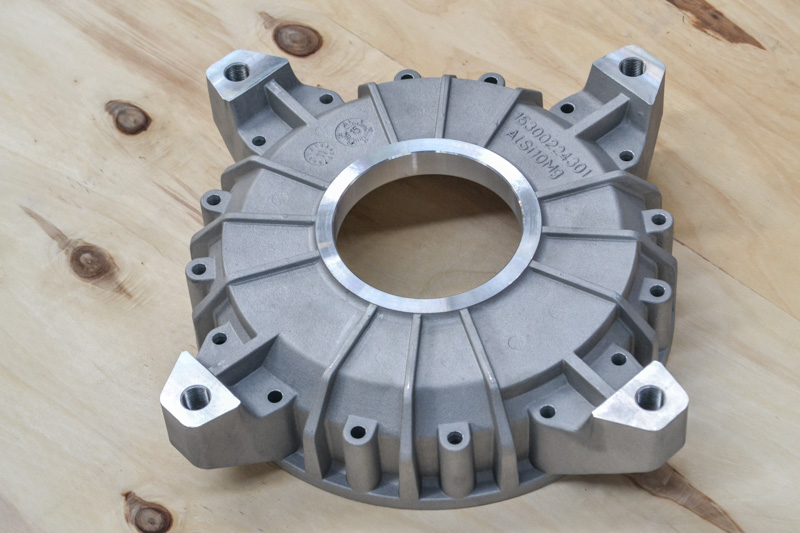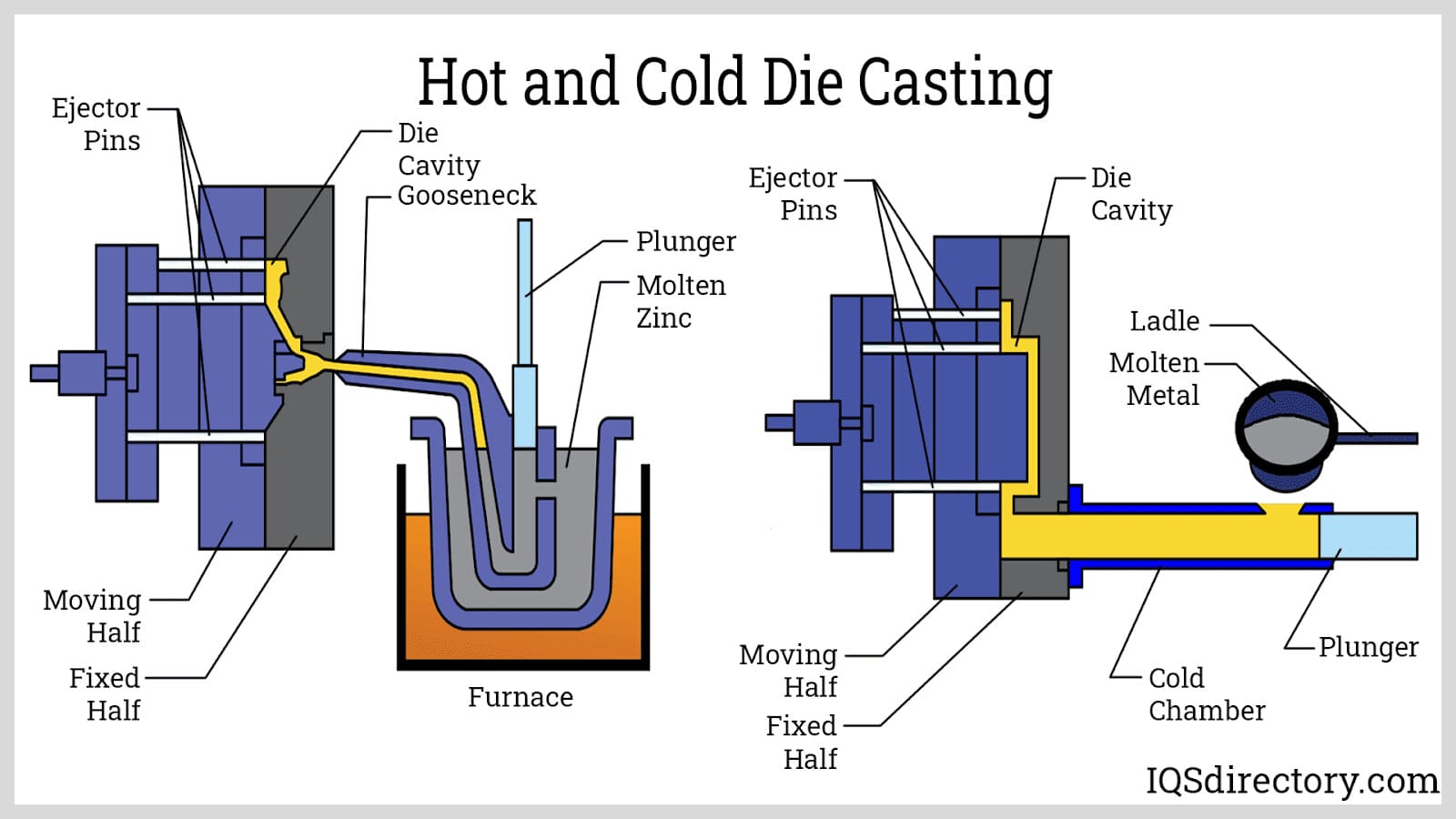Sustainability practices in modern Aluminum Foundries for energy-efficient production
The Significance of Aluminum Foundry ahead of time Industrial Manufacturing Techniques
The Aluminum Foundry plays a pivotal function in the advancement of industrial production techniques. Its light-weight buildings and convenience make Aluminum a perfect selection for various applications. Advanced casting techniques, including die casting and 3D printing, permit for intricate layouts and automation. As the sector moves towards automation and sustainability, concerns emerge regarding the future trajectory of Aluminum factories and their effect on making performance. What advancements and challenges exist ahead?
The Duty of Aluminum in Modern Manufacturing
Aluminum plays a pivotal function in modern-day production due to its distinct properties and adaptability. As a light-weight steel, it significantly decreases the overall weight of products, enhancing fuel performance in transportation and aerospace sectors. Its superb deterioration resistance assurances long life and integrity, making it perfect for different applications, from automotive elements to constructing materials. Light weight aluminum's pliability allows it to be easily formed right into intricate designs, helping with innovative item development. In addition, its conductivity makes it ideal for electric applications, adding to advancements in electronics and sustainable power technologies. The versatility of Aluminum also includes its recyclability, which adds to sustainable production methods. As markets remain to prioritize performance and ecological obligation, Aluminum remains an essential product, fostering technology and boosting manufacturing processes across numerous sectors. Its duty is not merely practical; it is foundational to the development of modern-day commercial techniques.
Key Advantages of Aluminum Casting
The benefits of Aluminum spreading are considerable, adding to its appeal in numerous industrial applications. One essential benefit is the lightweight nature of aluminum, which decreases transport expenses and improves gas performance in automotive and aerospace sectors. Furthermore, aluminum's outstanding rust resistance expands the lifespan of cast parts, making them suitable for aquatic and outdoor environments.
Additionally, Aluminum spreading permits elaborate designs and complex geometries, offering makers with better flexibility in product advancement - Aluminum Foundry. The product additionally shows good thermal and electrical conductivity, making it suitable for a series of digital applications
Another benefit is the rapid solidification procedure, which causes finer microstructures and enhanced mechanical buildings. Light weight aluminum can be recycled repetitively without shedding its fundamental qualities, promoting sustainability in producing techniques. These benefits emphasize Aluminum casting's critical role ahead of time commercial production strategies while fulfilling diverse engineering requirements.
Innovative Casting Strategies and Technologies
Many innovative spreading methods and technologies have arised to improve the performance and quality of Aluminum production. Amongst these, pass away casting sticks out as a technique that enables for high-volume manufacturing of complicated shapes with superb dimensional precision. This technique makes use of high pressure to infuse molten Aluminum right into a mold, leading to smooth surface areas and lowered need for machining.
Another remarkable development is using 3D printing for mold and mildews, which enables fast prototyping and reduces preparations considerably. This innovation permits complex layouts that standard methods might struggle to accomplish.
In addition, investment casting proceeds to evolve, making use of advanced products and procedures to create accuracy parts. The fostering of computer system simulations in the casting process has additionally boosted outcomes by predicting prospective issues and maximizing mold layouts. With each other, these technologies are changing Aluminum factories, leading the means for more reliable manufacturing and exceptional product high quality in various industries.
Environmental Effect and Sustainability in Aluminum Foundries
As industries increasingly prioritize sustainability, the ecological influence of Aluminum foundries has actually come under examination. These facilities are substantial contributors to greenhouse gas emissions and energy usage, mostly as a result of the energy-intensive procedures included in melting and spreading light weight aluminum. The extraction of bauxite, the key ore, more exacerbates environmental problems, causing habitat destruction and contamination.
In feedback to these obstacles, many Aluminum shops are taking on more lasting techniques (Wisconsin Aluminum Foundry). Technologies such as recycling scrap Aluminum greatly lower energy usage and discharges, as recycling requires only a fraction of the power needed for key production. Additionally, the assimilation of renewable resource resources, such as solar and wind power, is acquiring grip in factories intending to decrease their carbon footprint
Additionally, advancements in modern technologies that minimize waste and improve resource efficiency are becoming necessary for the future of the Aluminum industry. These initiatives underscore the shift towards an extra eco responsible and sustainable technique in Aluminum factories.
Applications of Aluminum Spreading Across Industries
Aluminum casting finds extensive application throughout varied markets, owing to its desirable buildings such as lightweight, deterioration resistance, and superb machinability. In the automotive sector, manufacturers make use of Aluminum spreadings for engine parts, transmission real estates, and structural parts, boosting fuel efficiency and efficiency. The aerospace market gain from light weight aluminum's strength-to-weight proportion, using it in airplane structures and elements, which contribute to minimized total weight and improved fuel economic situation.
Moreover, the consumer electronic devices industry uses Aluminum castings for real estates and chassis, combining aesthetic allure with resilience. In building, Aluminum spreadings are used for window frames, doors, and architectural aspects, supplying both capability and style adaptability. Furthermore, the marine industry makes use of Aluminum casting for boat hulls and fittings, making sure resistance to deep sea rust. This adaptability across numerous areas underscores Aluminum spreading's essential role in modern-day industrial applications, driving development and efficiency.
Challenges Faced by Aluminum Foundries
Aluminum factories encounter substantial difficulties in conference rigid ecological guidelines while maintaining operational performance. Furthermore, a scarcity of proficient labor my blog intensifies these difficulties, preventing performance and development. Addressing these problems is essential for the sustainability and growth of the Aluminum casting industry.
Environmental Laws Conformity
Aluminum factories play a crucial duty in commercial production, they often deal with substantial challenges in complying with environmental guidelines. These policies are designed to decrease air and water contamination, waste generation, and power consumption. Factories typically should spend in innovative technologies to satisfy rigorous emission standards and manage dangerous products efficiently. The costs related to these upgrades can stress financial resources, especially for smaller sized operations. Additionally, the complexity of passing through regulative frameworks can bring about conformity errors, leading to expensive charges. Moreover, continual adjustments in regulations require factories to adapt quickly, typically requiring continuous training and updates in functional methods. Balancing regulatory conformity with manufacturing effectiveness continues to be an important worry for the Aluminum Foundry market.
Experienced Labor Shortage
As the Aluminum Foundry sector remains to advance, a pushing challenge has actually arised: a competent labor shortage that threatens the field's performance this article and growth. This scarcity is mostly fueled by an aging labor force and the lack of interest amongst younger generations in seeking careers in production. Many knowledgeable tasks call for customized training and experience, which are progressively difficult to discover. Aluminum shops battle to maintain operational performance, leading to hold-ups and increased production prices. Efforts to bring in new ability via apprenticeship programs and collaborations with schools are underway, yet these campaigns take some time to yield outcomes. Without a durable increase of experienced workers, the Aluminum Foundry industry might face substantial difficulties in fulfilling the needs of modern-day industrial production.
Future Fads in Aluminum Foundry Manufacturing Techniques
The future of Aluminum Foundry manufacturing strategies is poised to be considerably formed by developments in automation and lasting product innovations. Automation is expected to improve performance and precision in Foundry processes, lowering labor expenses and decreasing human error (Aluminum Castings). At the same time, a growing emphasis on sustainability will drive the advancement of environment-friendly products and practices, aligning the market with global environmental goals
Automation in Foundry Processes

Lasting Material Innovations
While the Aluminum Foundry market welcomes automation, an identical concentrate on sustainable product innovations is improving manufacturing techniques for the future. Innovations in recycling processes are allowing shops to utilize post-consumer aluminum, markedly minimizing power intake and waste. The growth of eco-friendly additives and coverings is decreasing the ecological impact connected with standard products. Innovations in lightweight Aluminum alloys are enhancing efficiency while promoting sustainability, making products not just extra efficient but likewise much easier to reuse at the end of their life process. As the sector adapts to stricter ecological regulations, these sustainable practices are ending up being necessary. Inevitably, the dedication to lasting material innovations in Aluminum foundries will drive improved productivity while addressing worldwide environmental challenges.
Frequently Asked Inquiries
Just How Does Aluminum Contrast to Various Other Steels in Casting?
Aluminum supplies benefits over other metals in spreading, consisting of reduced melting factors, excellent fluidity, and resistance to corrosion. These residential properties allow elaborate designs and faster production, making Aluminum a preferred option for several sectors.
What Precaution Remain In Area in Aluminum Foundries?
Safety measures in Aluminum foundries include protective gear for workers, correct air flow systems, routine tools upkeep, fire prevention methods, and rigorous adherence to security guidelines, guaranteeing a secure environment while reducing the risk of injuries and crashes.
How Are Aluminum Alloys Selected for Specific Applications?
Aluminum alloys are chosen based upon mechanical homes, corrosion resistance, and thermal conductivity. Designers examine application needs, thinking about elements like weight, toughness, and ecological conditions, making certain suitable performance for details industrial or commercial usages.
What Is the Average Life-span of Aluminum Cast Products?
The typical life expectancy of Aluminum cast items normally varies from 20 to 50 years, depending on ecological elements, use conditions, and upkeep techniques. Appropriate care can considerably prolong their practical long life and performance efficiency.

Are There Accreditations for Aluminum Foundry Processes?
Yes, there are qualifications for Aluminum Foundry processes, consisting of ISO 9001 for top quality management systems and certain market requirements like ASTM and SAE, which assure adherence to quality and security in Aluminum manufacturing and spreading.
Aluminum factories play a crucial role in commercial production, they often deal with substantial challenges in abiding with ecological regulations. Aluminum foundries have a hard time to keep operational efficiency, leading to delays and enhanced production costs. The future of Aluminum Foundry production methods is poised to be substantially formed by developments in official source automation and lasting product technologies. Significantly, automation is shaping the landscape of Aluminum Foundry manufacturing strategies, driving effectiveness and accuracy. While the Aluminum Foundry sector welcomes automation, a parallel focus on sustainable product technologies is improving manufacturing methods for the future.